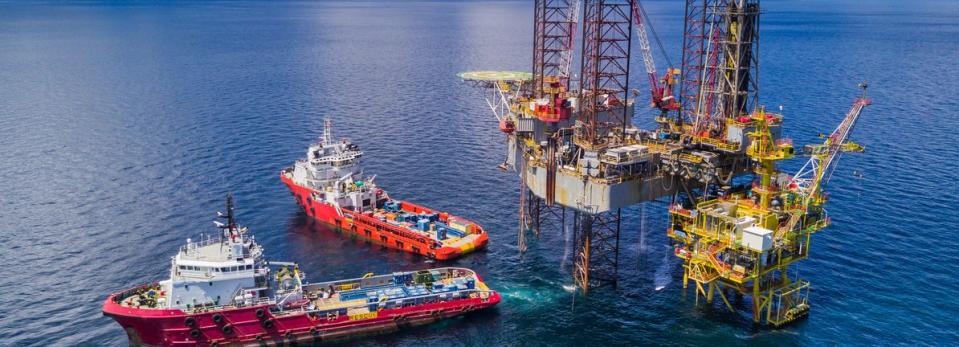Why You Should Like Northern Oil and Gas, Inc.’s (NYSEMKT:NOG) ROCE

Want to participate in a short research study? Help shape the future of investing tools and you could win a $250 gift card!
Today we'll evaluate Northern Oil and Gas, Inc. (NYSEMKT:NOG) to determine whether it could have potential as an investment idea. Specifically, we'll consider its Return On Capital Employed (ROCE), since that will give us an insight into how efficiently the business can generate profits from the capital it requires.
First, we'll go over how we calculate ROCE. Then we'll compare its ROCE to similar companies. Finally, we'll look at how its current liabilities affect its ROCE.
Understanding Return On Capital Employed (ROCE)
ROCE measures the amount of pre-tax profits a company can generate from the capital employed in its business. In general, businesses with a higher ROCE are usually better quality. In brief, it is a useful tool, but it is not without drawbacks. Author Edwin Whiting says to be careful when comparing the ROCE of different businesses, since 'No two businesses are exactly alike.'
So, How Do We Calculate ROCE?
The formula for calculating the return on capital employed is:
Return on Capital Employed = Earnings Before Interest and Tax (EBIT) ÷ (Total Assets - Current Liabilities)
Or for Northern Oil and Gas:
0.26 = US$309m ÷ (US$1.4b - US$226m) (Based on the trailing twelve months to March 2019.)
Therefore, Northern Oil and Gas has an ROCE of 26%.
Check out our latest analysis for Northern Oil and Gas
Does Northern Oil and Gas Have A Good ROCE?
One way to assess ROCE is to compare similar companies. Using our data, we find that Northern Oil and Gas's ROCE is meaningfully better than the 7.4% average in the Oil and Gas industry. I think that's good to see, since it implies the company is better than other companies at making the most of its capital. Setting aside the comparison to its industry for a moment, Northern Oil and Gas's ROCE in absolute terms currently looks quite high.
In our analysis, Northern Oil and Gas's ROCE appears to be 26%, compared to 3 years ago, when its ROCE was 11%. This makes us think the business might be improving. The image below shows how Northern Oil and Gas's ROCE compares to its industry, and you can click it to see more detail on its past growth.
When considering this metric, keep in mind that it is backwards looking, and not necessarily predictive. ROCE can be misleading for companies in cyclical industries, with returns looking impressive during the boom times, but very weak during the busts. ROCE is, after all, simply a snap shot of a single year. We note Northern Oil and Gas could be considered a cyclical business. Since the future is so important for investors, you should check out our free report on analyst forecasts for Northern Oil and Gas.
Do Northern Oil and Gas's Current Liabilities Skew Its ROCE?
Liabilities, such as supplier bills and bank overdrafts, are referred to as current liabilities if they need to be paid within 12 months. The ROCE equation subtracts current liabilities from capital employed, so a company with a lot of current liabilities appears to have less capital employed, and a higher ROCE than otherwise. To counteract this, we check if a company has high current liabilities, relative to its total assets.
Northern Oil and Gas has total assets of US$1.4b and current liabilities of US$226m. Therefore its current liabilities are equivalent to approximately 16% of its total assets. A minimal amount of current liabilities limits the impact on ROCE.
What We Can Learn From Northern Oil and Gas's ROCE
This is good to see, and with such a high ROCE, Northern Oil and Gas may be worth a closer look. Northern Oil and Gas looks strong on this analysis, but there are plenty of other companies that could be a good opportunity . Here is a free list of companies growing earnings rapidly.
For those who like to find winning investments this free list of growing companies with recent insider purchasing, could be just the ticket.
We aim to bring you long-term focused research analysis driven by fundamental data. Note that our analysis may not factor in the latest price-sensitive company announcements or qualitative material.
If you spot an error that warrants correction, please contact the editor at editorial-team@simplywallst.com. This article by Simply Wall St is general in nature. It does not constitute a recommendation to buy or sell any stock, and does not take account of your objectives, or your financial situation. Simply Wall St has no position in the stocks mentioned. Thank you for reading.

 Yahoo Finance
Yahoo Finance 
